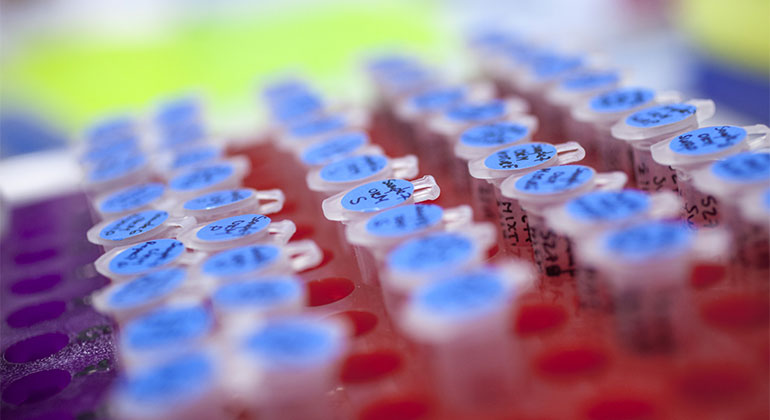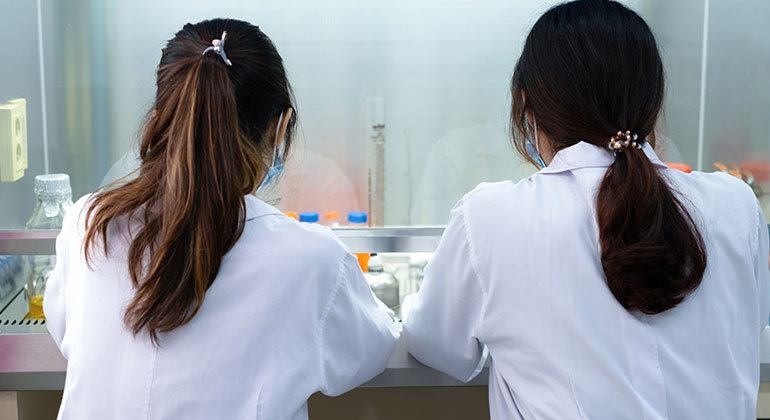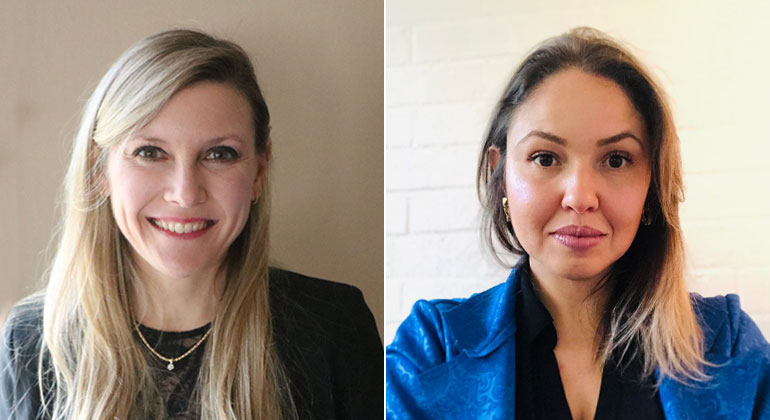Mount Sinai Medical Center Debunks Latino Myths about Diabetes
November is Diabetes Awareness Month and the Latino community, which is disproportionately affected by the disease, subscribes to certain myths that may contribute to the staggering statistics reflective of its community.
November is Diabetes Awareness Month and the Latino community, which is disproportionately affected by the disease, subscribes to certain myths that may contribute to the staggering statistics reflective of its community. In an effort to support Diabetes prevention, Mount Sinai experts addressed the myths, debunking the 5 most commonly perpetuated myths that exist in the Latino community.
Myth #1. "Diabetes is not that serious of a disease, it’s not going to kill me!"
Every twenty seconds another neighbor, family member, co-worker or friend is told that they have Diabetes. It strikes all races, ethnicities, and cultures. It has no boundaries in terms of reach and complexity. "There are more than 1,000,000 NYC Latinos living with Diabetes and about 1/3 of those don’t even know it," says Eliscer Guzmán M.D. F.A.C.C. affiliated physician of Mount Sinai.
Diabetes is a condition in which the body cannot regulate the amount of sugar (glucose) in the blood. People with diabetes either do not produce enough insulin (type 1 diabetes) or cannot use insulin properly (type 2 diabetes). Type 2 Diabetes cannot be cured, but it can be controlled by taking medication. Lifestyle principles, such as a good diet and movement can also help to control diabetes.
"Latinos are at high risk primarily because of their high fat diet, sedentary lifestyles, and there is a genetic predisposition. A few modifications like more movement – walking, dancing, taking the stairs, doing house work, and eating vegetables and certain fruit in moderation and less white rice, would be a good first step," added Dr. Guzmán.
Myth # 2. "Home remedies like Aloe Vera and infusions with nettle or linseed can cure Diabetes"
Folklore and spiritualism play a major role in the lives of Hispanics and affect their attitudes and behaviors towards healthcare. These practices are firmly rooted in their culture and must be taken into consideration when treating Latinos. Although they hold physicians in high regard, their first line of cure is always a home remedy.
"There are no miraculous cures or home remedies for Diabetes," says Samer Kottiech M.D., a specialist in cardiology at The Mount Sinai Hospital. "The first thing to do is to consult a physician to create your own plan to manage or prevent Diabetes."
"At Mount Sinai, we approach each patient with cultural sensitivity and a holistic, integrated approach. With the Hispanic population particularly, it’s important to acknowledge that there are some natural ingredients that can be integrated into overall treatment but, we also make it clear that there are none that cure the disease and it is critical to follow your physician’s treatment plan." Dr. Kottiech adds.
Myth #3. "Diabetes is contagious"
Word of mouth is a powerful force in the Hispanic community. Unfortunately, rumors and misinformation can spread quickly and be perceived as truth. For instance, Diabetes is not contagious like a cold or the flu.
"While not contagious, it may be hereditary and Mount Sinai is using all of its muscle as a leading research, primary care, and tertiary care hospital to reverse the trends of this condition throughout the Hispanic and other high risk NYC communities, says Tracy Breen MD and Assistant Professor Medicine, Endocrinology, Diabetes and Bone Disease at Mount Sinai. "Our genetic researchers are studying the characteristics of why Diabetes is so far reaching throughout the Hispanic community and why certain diabetes complications such as heart attacks, strokes, blindness, etc. may afflict this population more so than others," adds Dr. Breen.
Myth #4. "Preventing Diabetes means eating tasteless food"
The kitchen is the heart and soul of every Latino home. Traditions, values, family histories and daily experiences are shared over meals. Unfortunately, many of the dishes being cooked in Latino homes are high in fat and contain a significant amount of starch.
"A healthy meal plan means a diet that is low in fat, moderate in salt and sugar, and based on whole grains, vegetables and fruit," says Sandra Garcia, RPAC, Certified Diabetes Educator for Mount Sinai. "A critical part of our five week self-management course is about food planning and preparation. The importance of portion size and foods to stay away from are especially important topics," Garcia concludes.
Myth #5. "Preventing Diabetes means losing weight and being skinny is unhealthy!"
The Hispanic culture has always applauded and embraced body types that are fuller. In children particularly, a bigger frame is seen as a sign of health. And, exercise is not generally part of the lifestyle of Hispanics, who tend live a more sedentary life.
"For individuals with Diabetes, maintaining a healthy weight is critical to life expectancy; and, we know it’s hard sometimes to get started. So, we remind them that exercise doesn’t necessarily mean two hours at the gym each day," says Samer Kottiech MD and Cardiologist at Mount Sinai.
"The goal is not to be ‘skinny,’ but rather to maintain a healthy weight which can help you prevent problems like type 2 diabetes, heart disease, high blood pressure, unhealthy cholesterol and high blood glucose," concludes," Dr. Kottiech.
Signs of Diabetes may include: frequent urination, unusual thirst, extreme hunger, unusual weight loss and extreme fatigue, irritability, frequent infections, blurred vision, cuts/bruises that are slow to heal, as well as tingling/numbness in the hands/feet.
If you want to learn more about diabetes call The Mount Sinai Diabetes Center:
For general information: (212) 241-7429
For a medical consultation: (212) 241-7975
For diabetes classes: (212) 241-3422
About The Mount Sinai Medical Center
The Mount Sinai Medical Center encompasses both The Mount Sinai Hospital and Mount Sinai School of Medicine. Established in 1968, Mount Sinai School of Medicine is one of the leading medical schools in the United States. The Medical School is noted for innovation in education, biomedical research, clinical care delivery, and local and global community service. It has more than 3,400 faculty in 32 departments and 14 research institutes, and ranks among the top 20 medical schools both in National Institutes of Health (NIH) funding and by U.S. News & World Report.
The Mount Sinai Hospital, founded in 1852, is a 1,171-bed tertiary- and quaternary-care teaching facility and one of the nation's oldest, largest and most-respected voluntary hospitals. In 2011, U.S. News & World Report ranked The Mount Sinai Hospital 16th on its elite Honor Roll of the nation's top hospitals based on reputation, safety, and other patient-care factors. Of the top 20 hospitals in the United States, Mount Sinai is one of 12 integrated academic medical centers whose medical school ranks among the top 20 in NIH funding and US News & World Report and whose hospital is on the US News & World Report Honor Roll. Nearly 60,000 people were treated at Mount Sinai as inpatients last year, and approximately 560,000 outpatient visits took place.
For more information, visit http://www.mountsinai.org.
Find Mount Sinai on:
Facebook: http://www.facebook.com/mountsinainyc
Twitter @mountsinainyc
YouTube: http://www.youtube.com/mountsinainy
About the Mount Sinai Health System
Mount Sinai Health System is one of the largest academic medical systems in the New York metro area, with 48,000 employees working across seven hospitals, more than 400 outpatient practices, more than 600 research and clinical labs, a school of nursing, and a leading school of medicine and graduate education. Mount Sinai advances health for all people, everywhere, by taking on the most complex health care challenges of our time—discovering and applying new scientific learning and knowledge; developing safer, more effective treatments; educating the next generation of medical leaders and innovators; and supporting local communities by delivering high-quality care to all who need it.
Through the integration of its hospitals, labs, and schools, Mount Sinai offers comprehensive health care solutions from birth through geriatrics, leveraging innovative approaches such as artificial intelligence and informatics while keeping patients’ medical and emotional needs at the center of all treatment. The Health System includes approximately 9,000 primary and specialty care physicians and 10 free-standing joint-venture centers throughout the five boroughs of New York City, Westchester, Long Island, and Florida. Hospitals within the System are consistently ranked by Newsweek’s® “The World’s Best Smart Hospitals, Best in State Hospitals, World Best Hospitals and Best Specialty Hospitals” and by U.S. News & World Report's® “Best Hospitals” and “Best Children’s Hospitals.” The Mount Sinai Hospital is on the U.S. News & World Report® “Best Hospitals” Honor Roll for 2025-2026.
For more information, visit https://www.mountsinai.org or find Mount Sinai on Facebook, Instagram, LinkedIn, X, and YouTube.

Mount Sinai Researchers Move Closer to a Cure for Diabetes
Dec 10, 2024 View All Press Releases
Diabetes May Accelerate Blood Cancer Growth, Yet Survival Outcomes Differ by Race
Sep 29, 2023 View All Press Releases
Researchers Identify Potential Target for Treatment Among Patients With Type 2 Diabetes
Aug 04, 2022 View All Press Releases
SARS-CoV-2 Infection Likely Not Associated With Increased Risk of New-Onset Diabetes
Feb 22, 2022 View All Press ReleasesArtificial Pancreas System Better Controls Blood Glucose Levels than Current Technology
Oct 16, 2019 View All Press Releases
